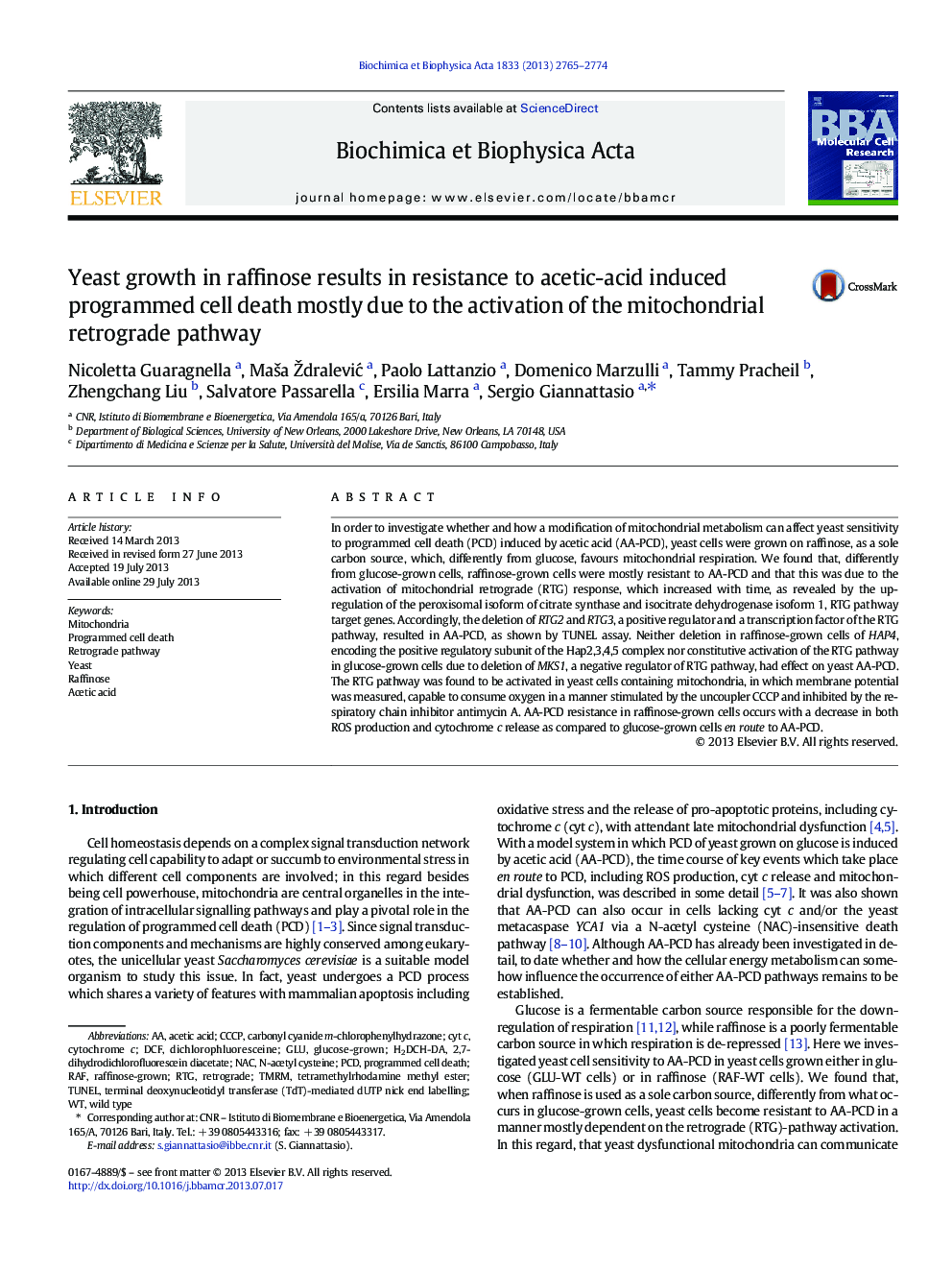| Article ID | Journal | Published Year | Pages | File Type |
|---|---|---|---|---|
| 8303864 | Biochimica et Biophysica Acta (BBA) - Molecular Cell Research | 2013 | 10 Pages |
Abstract
In order to investigate whether and how a modification of mitochondrial metabolism can affect yeast sensitivity to programmed cell death (PCD) induced by acetic acid (AA-PCD), yeast cells were grown on raffinose, as a sole carbon source, which, differently from glucose, favours mitochondrial respiration. We found that, differently from glucose-grown cells, raffinose-grown cells were mostly resistant to AA-PCD and that this was due to the activation of mitochondrial retrograde (RTG) response, which increased with time, as revealed by the up-regulation of the peroxisomal isoform of citrate synthase and isocitrate dehydrogenase isoform 1, RTG pathway target genes. Accordingly, the deletion of RTG2 and RTG3, a positive regulator and a transcription factor of the RTG pathway, resulted in AA-PCD, as shown by TUNEL assay. Neither deletion in raffinose-grown cells of HAP4, encoding the positive regulatory subunit of the Hap2,3,4,5 complex nor constitutive activation of the RTG pathway in glucose-grown cells due to deletion of MKS1, a negative regulator of RTG pathway, had effect on yeast AA-PCD. The RTG pathway was found to be activated in yeast cells containing mitochondria, in which membrane potential was measured, capable to consume oxygen in a manner stimulated by the uncoupler CCCP and inhibited by the respiratory chain inhibitor antimycin A. AA-PCD resistance in raffinose-grown cells occurs with a decrease in both ROS production and cytochrome c release as compared to glucose-grown cells en route to AA-PCD.
Keywords
Related Topics
Life Sciences
Biochemistry, Genetics and Molecular Biology
Biochemistry
Authors
Nicoletta Guaragnella, MaÅ¡a ŽdraleviÄ, Paolo Lattanzio, Domenico Marzulli, Tammy Pracheil, Zhengchang Liu, Salvatore Passarella, Ersilia Marra, Sergio Giannattasio,
